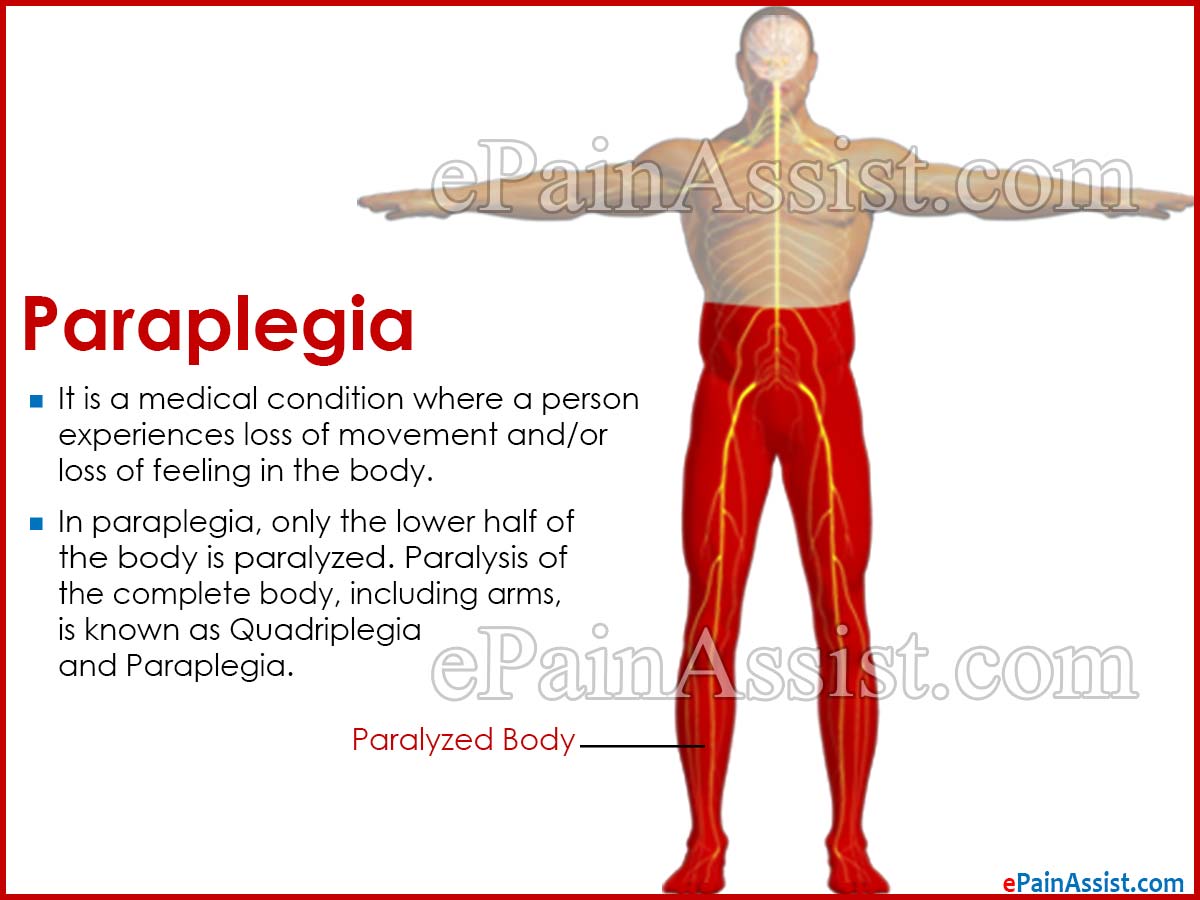What is Paraplegia?
Paraplegia is a medical condition where a person experiences loss of movement and/or loss of feeling in the body. This usually occurs after an injury to the nervous system. Paraplegia can involve complete or partial paralysis of the legs and/or the trunk. The severity and location of the damage to the nervous system determines the extent of the paralysis. In paraplegia, only the lower half of the body is paralyzed. Paralysis of the complete body, including arms, is known as Quadriplegia and Paraplegia.

Depending on the extent and location of the damage to the nervous system, there are some patients who can resume minimal function. Majority of the patients suffering from paraplegia will have this condition permanently. Treatment depends on the cause and comprises mainly of rehab and physical therapy.
Causes of Paraplegia
The most common cause of paraplegia is any trauma or injury to the nervous system. Other causes include:
- Injury to the neck resulting in fracture of the cervical vertebrae.
- Fractured or broken back where the lumbar vertebrae are fractured.
- Injury to the spinal cord.
- Stroke.
- Hereditary spastic paraplegia, which is a genetic disorder.
- It can be congenital, i.e. present at birth.
- Presence of tumor within the spinal cord or constricting the spinal cord.
- Autoimmune diseases.
- Spinal cord disorders, such as syrinx.
- Infection.
Symptoms of Paraplegia
Symptoms depend on the extent of the involvement of the spinal cord.
- Patient experiences loss of movement or muscle control in the legs, feet, toes, or trunk.
- Patient experiences loss of sensation in the legs, feet, toes or trunk.
- Tingling in the legs, feet, toes or trunk can also be felt.
- Bladder and bowel incontinence.
- Sexual dysfunction.
Tests to Diagnose Paraplegia
- Medical history and physical exam.
- CT scan to assess any injuries to the head or spine.
- MRI scan, where magnetic waves are used to take pictures of the structures within the head and spine.
- Myelography is a type of x-ray, which uses an injection of a contrast medium to see the spinal cord more clearly.
- Blood tests such as CBC.
- Evoked potential nerve test is done to assess the pathways of the nerve.
- Lumbar puncture is done where a sample of the CSF or cerebrospinal fluid is taken from the lower back.
Treatment of Paraplegia
- Patient should be taken to ER immediately if the cause is an injury. Emergency treatment is required so that further damage to the nervous system can be prevented.
- Steroids can be given to reduce the swelling of the spinal cord in injury.
- Surgery is done to stabilize the spine.
- Surgery is also required if the cause is a tumor, which is compressing the spinal cord.
- Radiation therapy can also be done.
- In majority of the patients, physical therapy and rehabilitation greatly helps in restoring the muscle function, strength and range of motion.
- Occupational and speech therapy is also beneficial.
- Patients should also learn how to use the wheelchair, as most of the paraplegics are dependent on a wheelchair for transportation.
